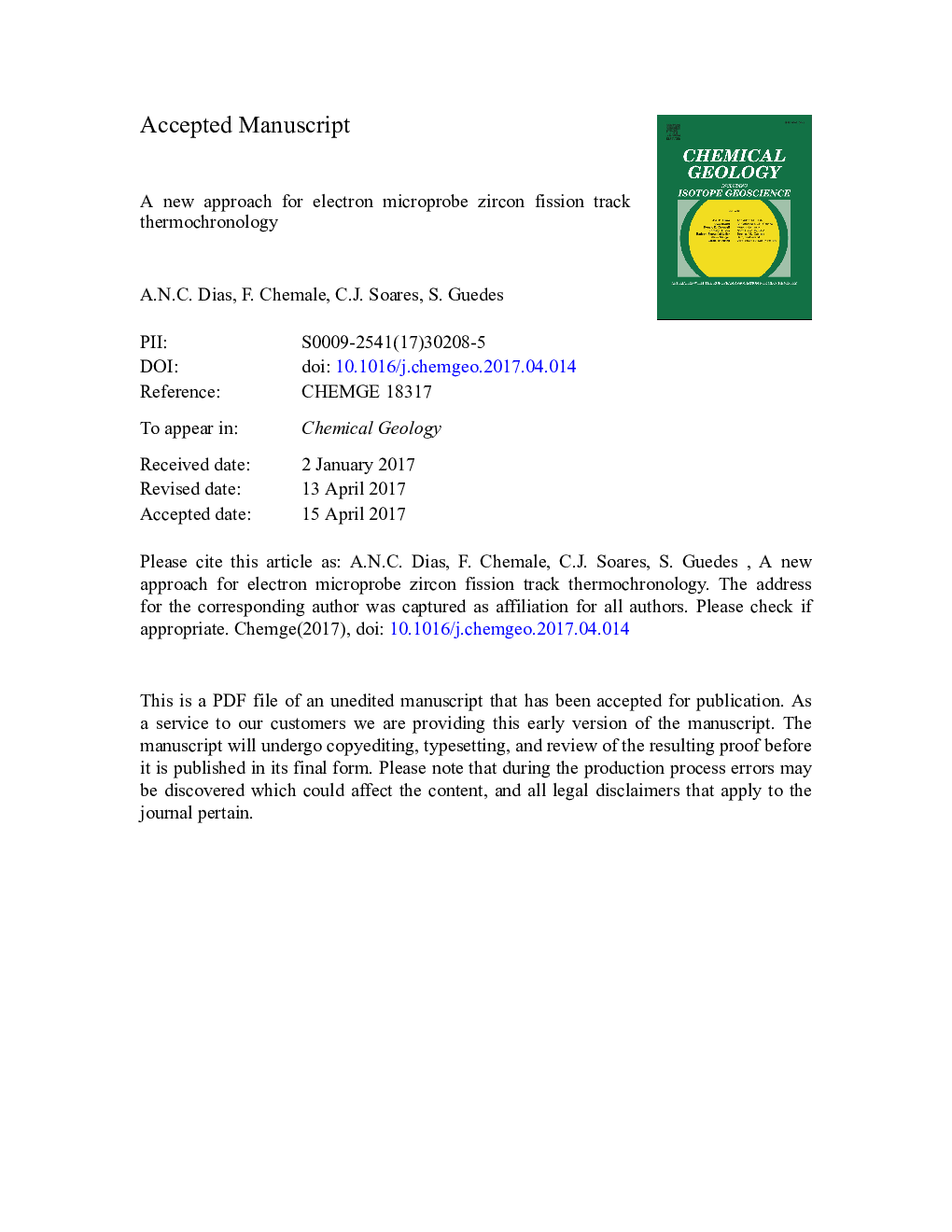| Article ID | Journal | Published Year | Pages | File Type |
|---|---|---|---|---|
| 5783009 | Chemical Geology | 2017 | 31 Pages |
Abstract
Fission track thermochronology (FTT) has been applied for decades to quantify rates and timing of processes in the shallow crust. The most widely used approach is the external detector method (EDM). In this conventional approach, an age is obtained by counting both the fossil (238U spontaneous fission) and the induced (235U induced fission) tracks using an optical microscope. The induced tracks are obtained through the irradiation of the sample with thermal neutrons in the nuclear reactor, which causes fission of 235U. Based on the studies carried out by Gombosi et al. (2014), we present an alternative method of dating zircons using electron probe microprobe analysis (EPMA) to measure uranium concentration [U]. The electron microprobe analysis fission track (EPMA-FT) method was applied to three samples of rapidly cooled zircons: the Fish Canyon Tuff, Poços de Caldas (syenite) and Serra Geral zircons. The analyses were performed using two approaches: 1) using the age equation described in Gombosi et al. (2014) and 2) using a new age equation calibration developed for this work. The results using the Gombosi et al. (2014) age equation were 26.7 ± 4.1 Ma, 80.6 ± 12.8 Ma and 130.9 ± 20.1 Ma, respectively, and the results using the age equation from this work were 27.8 ± 1.9 Ma, 83.8 ± 7.7 Ma and 136 ± 12 Ma, respectively. The uncertainty of the age is affected mainly by 238U concentration and ÏS (the spontaneous fission track density) determinations. Other factors can affect the uncertainty of the age, but their contributions are smaller. For all samples, the yield ages found by the two methods are consistent and overlap within two standard deviations of published reference ages determined from other radiometric techniques (i.e., K/Ar, 40Ar/39Ar, and/or U/Pb) and traditional FTT by the EDM.
Related Topics
Physical Sciences and Engineering
Earth and Planetary Sciences
Geochemistry and Petrology
Authors
A.N.C. Dias, F. Jr, C.J. Soares, S. Guedes,
